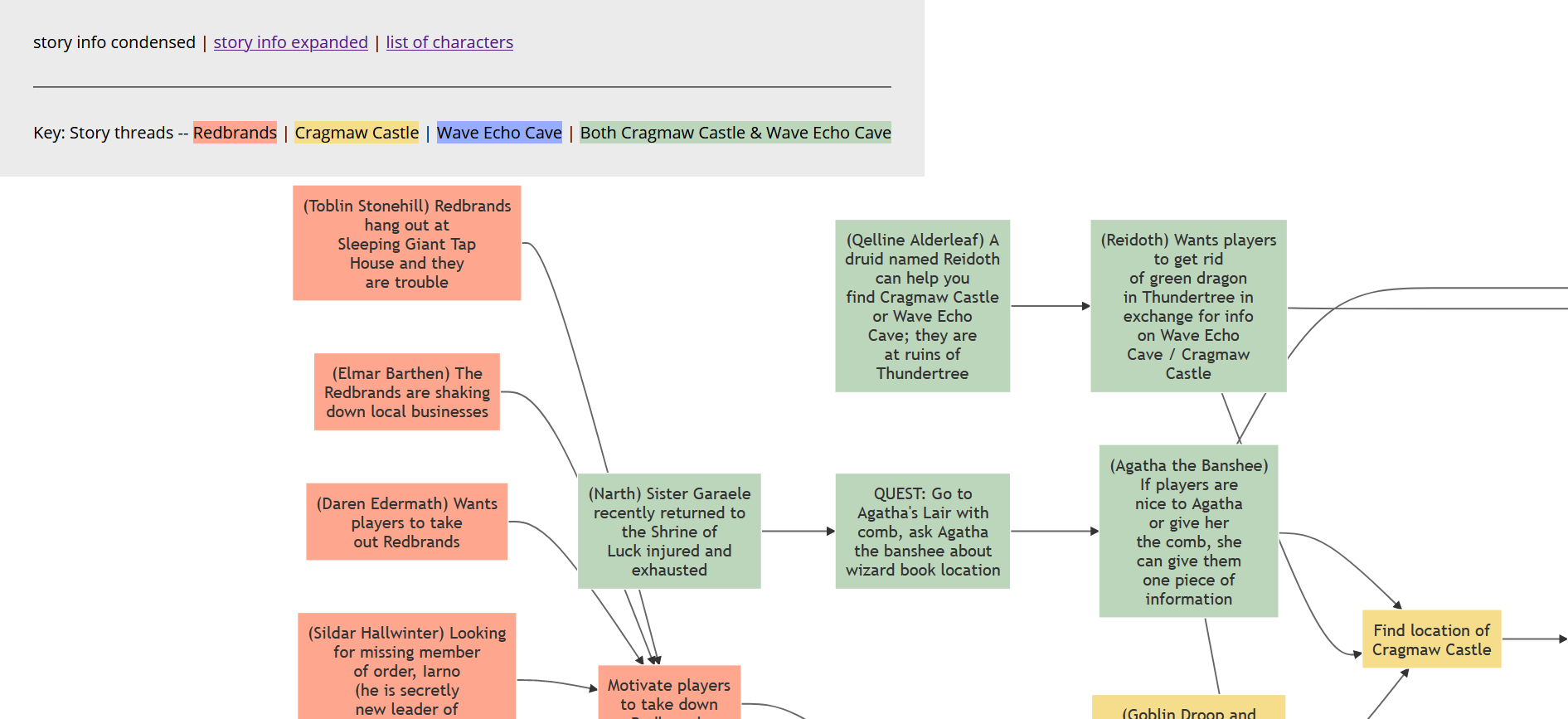Projects
Prototyping a Game Master Digital Assistant
Over the last year, I have been interviewing game masters (GMs) of tabletop roleplaying games (TTRPGs) about their process preparing for and running their games, with a focus on how they facilitate collaborative storytelling. I’m interested in better understanding the GMing process in order to help inform the creation of computational tools to help support GMs running TTRPGs. Here I discuss the creation process for a prototype of a computational support tool for GMs, informed by this interview process.

Science Internship Program: Virtual Reality / Physical Escape Room
I co-mentored a research project as part of the Science Internship Program in which we created an escape room that featured puzzles using both physical and virtual reality (VR) space. One escape room participant wears a virtual reality headset and can only see and interact with the virtual space. The other participant can only see the physical room and space. Working together with asymmetric information, both participants have to communicate with one another to solve puzzles and escape the room together. This project was an experiment in how to create asymmetric but cooperative puzzle-solving and studying the affordances of physical and virtual spaces.

Spatial Cognitive Implications of Teleporting Through Virtual Environments
One of the challenges in developing for virtual reality (VR) is allowing users to navigate large virtual environments (VEs) within small physical spaces. Some virtual reality navigation interfaces try to get around this problem by limiting physical movement in the space, for instance having users stand in place instead of physically walking and using the interface to move through the virtual space. Limiting users' physical motion, however, results in a loss of body-based movement cues which can result in disorientation and discomfort for the user. For this project we studied the effects of limiting body movement on spatial orientation in VR. We created different virtual environments with different VR navigation interfaces:
- Concordant: User physically walks and turns to move in the VE
- Partially Concordant: User physically turns to rotate but uses controller to change position in the VE
- Discordant: User uses controller exclusively to move and turn in VE
We looked at how well users were able to perform different triangle completion tasks (walking two legs of a triangle and pointing back to where they started) using different navigation interfaces. We also studied the effects of navigation in VEs with and without landmarks. We found that participants did significantly better using the concordant interface than either of the other two interfaces, and significantly better using the partially concordant interface versus the discordant interface. This points to the importance of body-based cues in spatial orientation, and the need to possibly develop new solutions that incorporate physical movement into navigation of VEs.
 Read the paper
Read the paper